Succession to the Crown: King George I
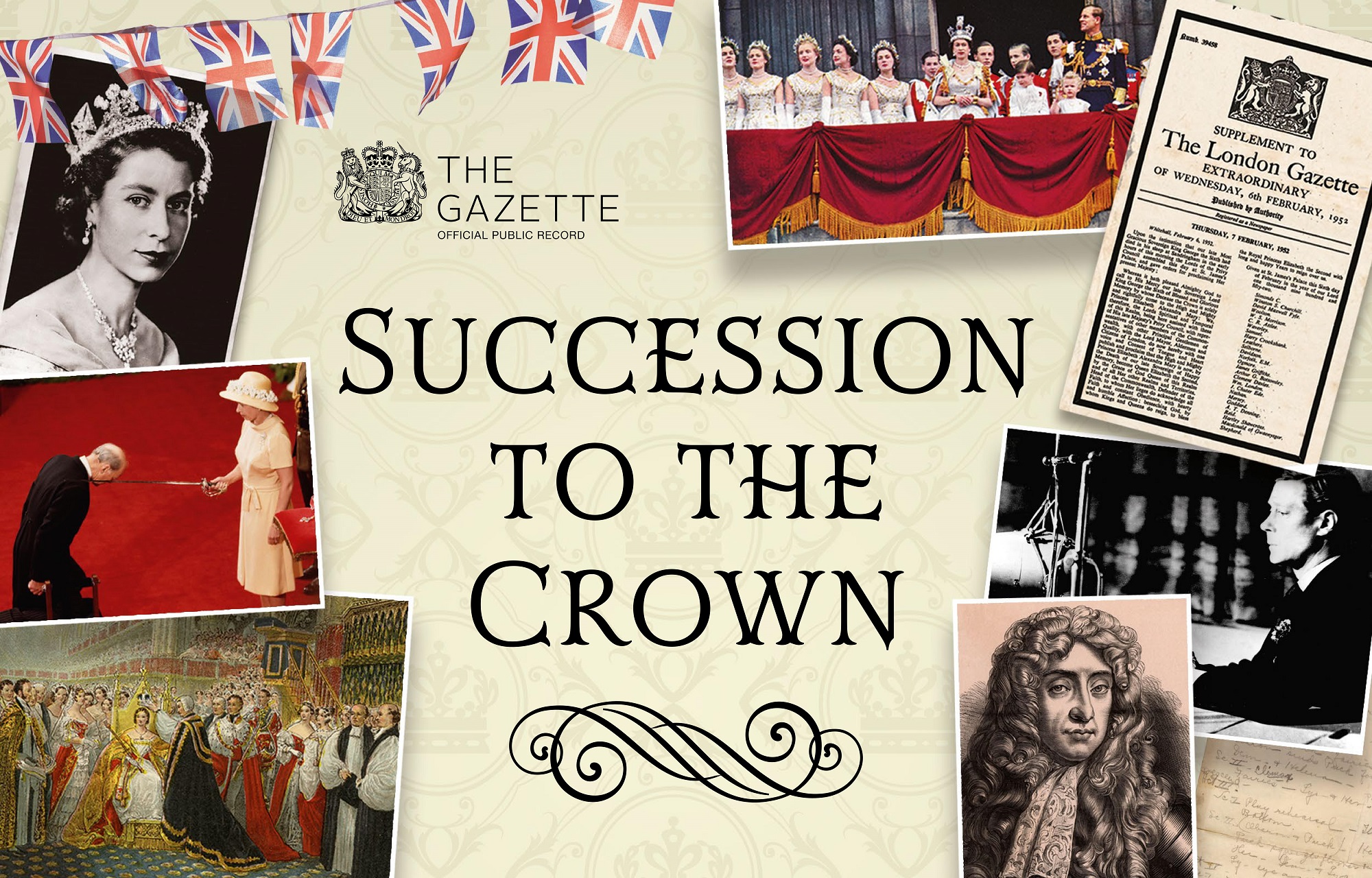
As the official public record since 1665, The Gazette has been recording successions to the Crown for over three centuries. As part of our ‘Succession to the Crown’ series, historian Russell Malloch looks through the archives at the accession and reign of King George I, as described in The Gazette.
Chapters
Succession to the Crown paperback
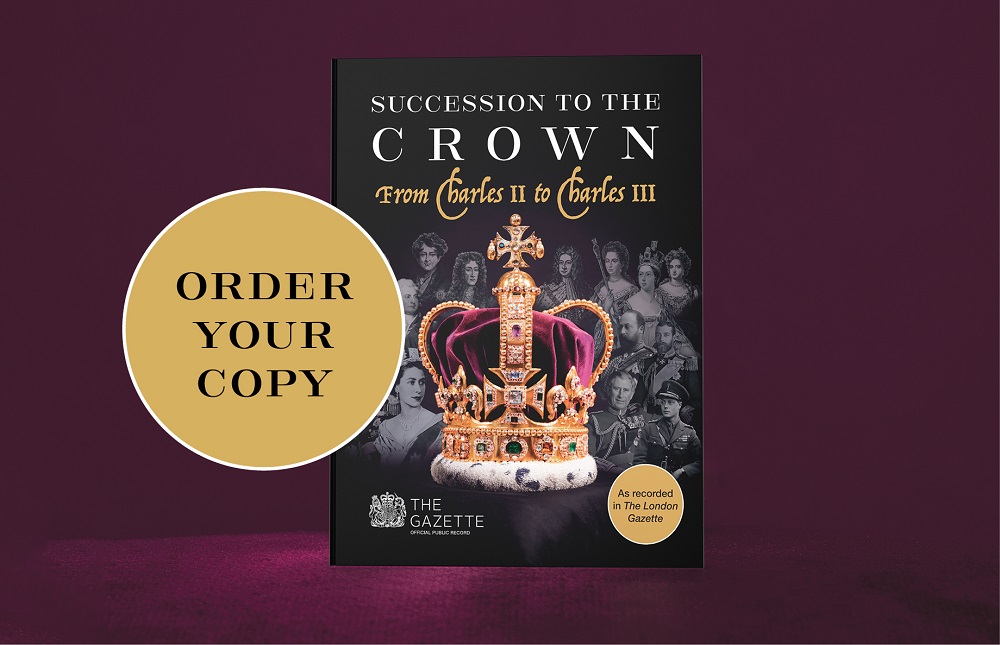
To celebrate the new king’s coronation, The Gazette’s Succession to the Crown series has been released in paperback.
Available to order now from the TSO Shop, the Succession to the Crown paperback explores the coronations, honours and emblems of the British monarchy, and includes an exclusive chapter on the accession of King Charles III.
Find out more in the link below.
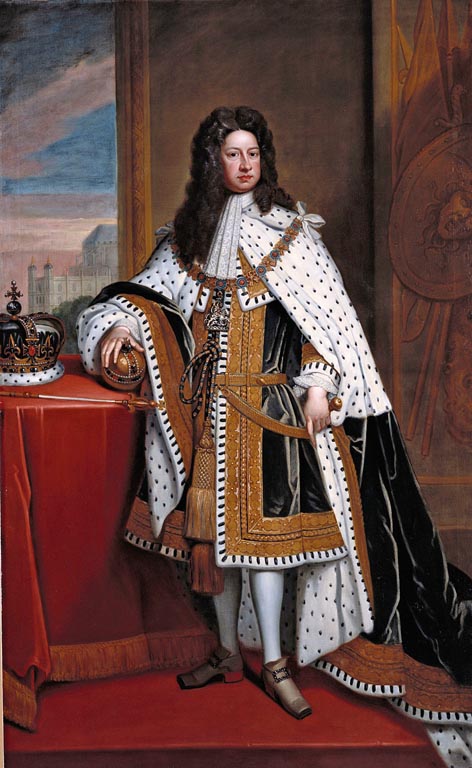
The House of Hanover
The law that regulated the succession to the Crown when Queen Anne died in August 1714 meant that the royal authority that attached to the former kingdoms of Great Britain and Ireland would be exercised by a European prince for the second time in a generation.
The London Gazette reported the measures the Privy Council took to secure the accession of the Queen’s German cousin, the son of the recently deceased Princess Sophia, Electress and Duchess Dowager of Hanover. The transfer proceeded in accordance with the Succession to the Crown Act 1707 and so followed the pre-union system in England, with the result that the council met at St James’s Palace on the day of the Queen’s death and adapted the wording of the Stewart proclamation to declare that the lawful king of Great Britain, France and Ireland was now “the high and mighty prince George Elector of Brunswick-Lunenburg” (Gazette issue 5247).
The Gazette continued the Stewart practice of publishing the accession proclamation, with the signature of more than 120 individuals who took part in the inauguration of George I as the first king of the House of Hanover, starting once again with Archbishop Tenison of Canterbury.
Absent the Realm
The Succession to the Crown Act 1707 had determined what should happen if Princess Sophia or her descendants were not in Great Britain when they succeeded to the Crown, and The Gazette explained that in this situation “the administration of the government […] is devolved upon” the seven officials named in the act, including the archbishop and lord chancellor. The Elector had named 18 of his own justices, including the archbishop of York and three Scottish dukes, who began their task by altering the religious texts that were used in public places, replacing King George for Queen Anne, and so on.
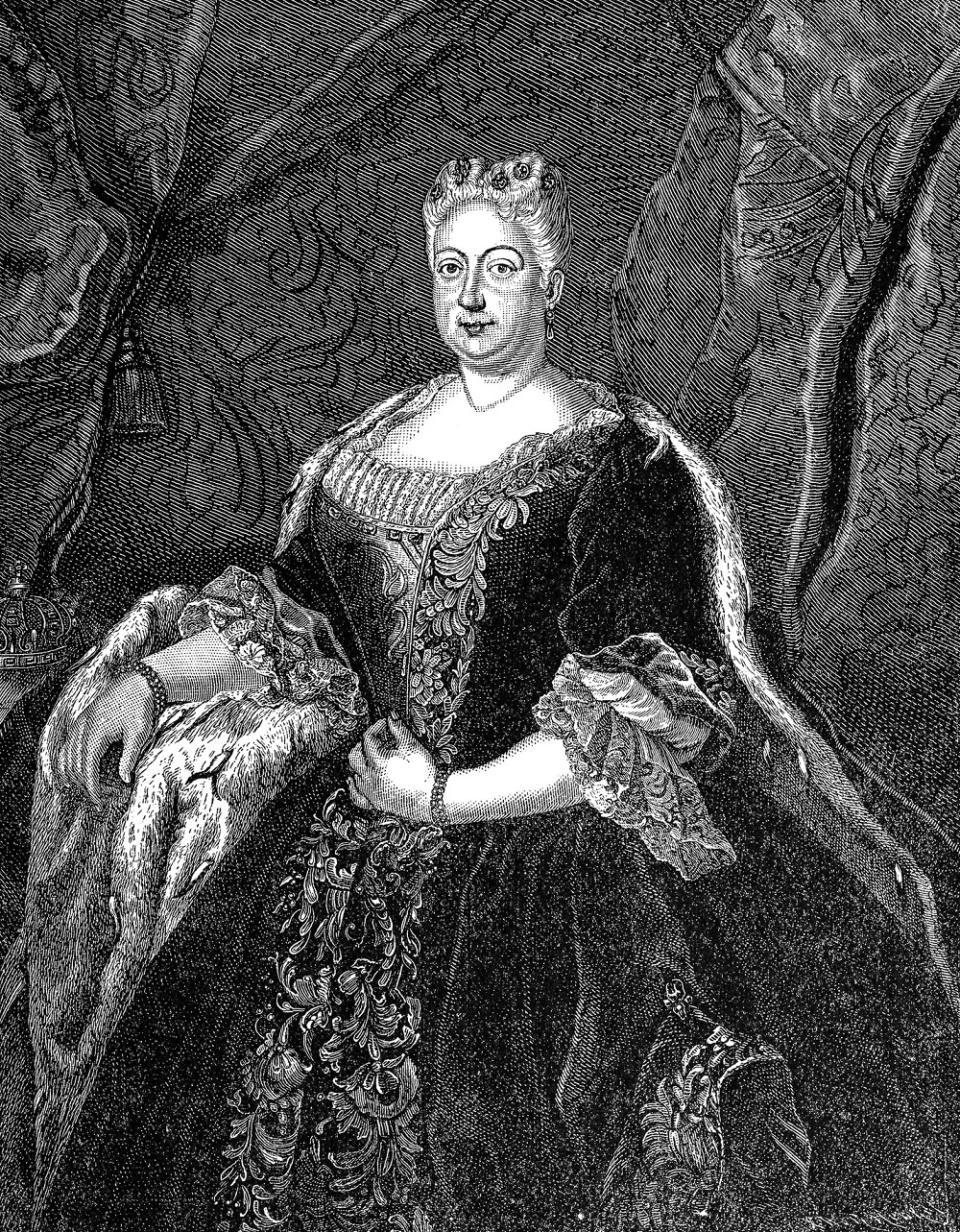 A copy of the accession document was sent to Scotland, where the Elector was proclaimed
king on 5 August 1714 by “the lord provost, magistrates and town council of Edinburgh,
being assisted with numbers of noblemen and other principal gentlemen of quality”
(Gazette issue 5249). The Scottish statement was signed by the Duke of Montrose, one of the Elector’s
nominees as a justice.
A copy of the accession document was sent to Scotland, where the Elector was proclaimed
king on 5 August 1714 by “the lord provost, magistrates and town council of Edinburgh,
being assisted with numbers of noblemen and other principal gentlemen of quality”
(Gazette issue 5249). The Scottish statement was signed by the Duke of Montrose, one of the Elector’s
nominees as a justice.
Ireland was still a separate entity, with its own council and peerage. The Irish government had routinely been administered by officers known as lords justices, and so an accession proclamation was issued from Dublin Castle on 6 August by the lords justices “and several of the lords spiritual and temporal of this realm, being assisted with those of her late Majesty’s Privy Council, and numbers of other principal gentlemen of quality, with the lord mayor, aldermen and citizens of Dublin” (Gazette issue 5251). The document was signed by the two lords justices, Archbishop Lindsay of Armagh and Sir Constantine Phipps, the lord chancellor.
The counsellors and other “gentlemen of quality” who met in London, Edinburgh and Dublin did not address the status of the Elector’s wife during their proceedings. The Prince and Princess of Orange had received a joint offer of the Crown in 1689, but the law that was in force when the Elector came to the throne gave no constitutional role to a queen consort. By 1714 this issue was of no practical relevance, as King George had divorced Sophia Dorothea of Zelle 20 years before he inherited the crown.
One of the last acts the justices performed before the Elector arrived in England was to increase the reward for securing the person of the Stewart claimant to the throne, the Old Pretender, to £100,000, as well as giving orders to the earl marshal to regulate the Elector’s entry through the city of London to St James’s Palace (Gazette issue 5260).
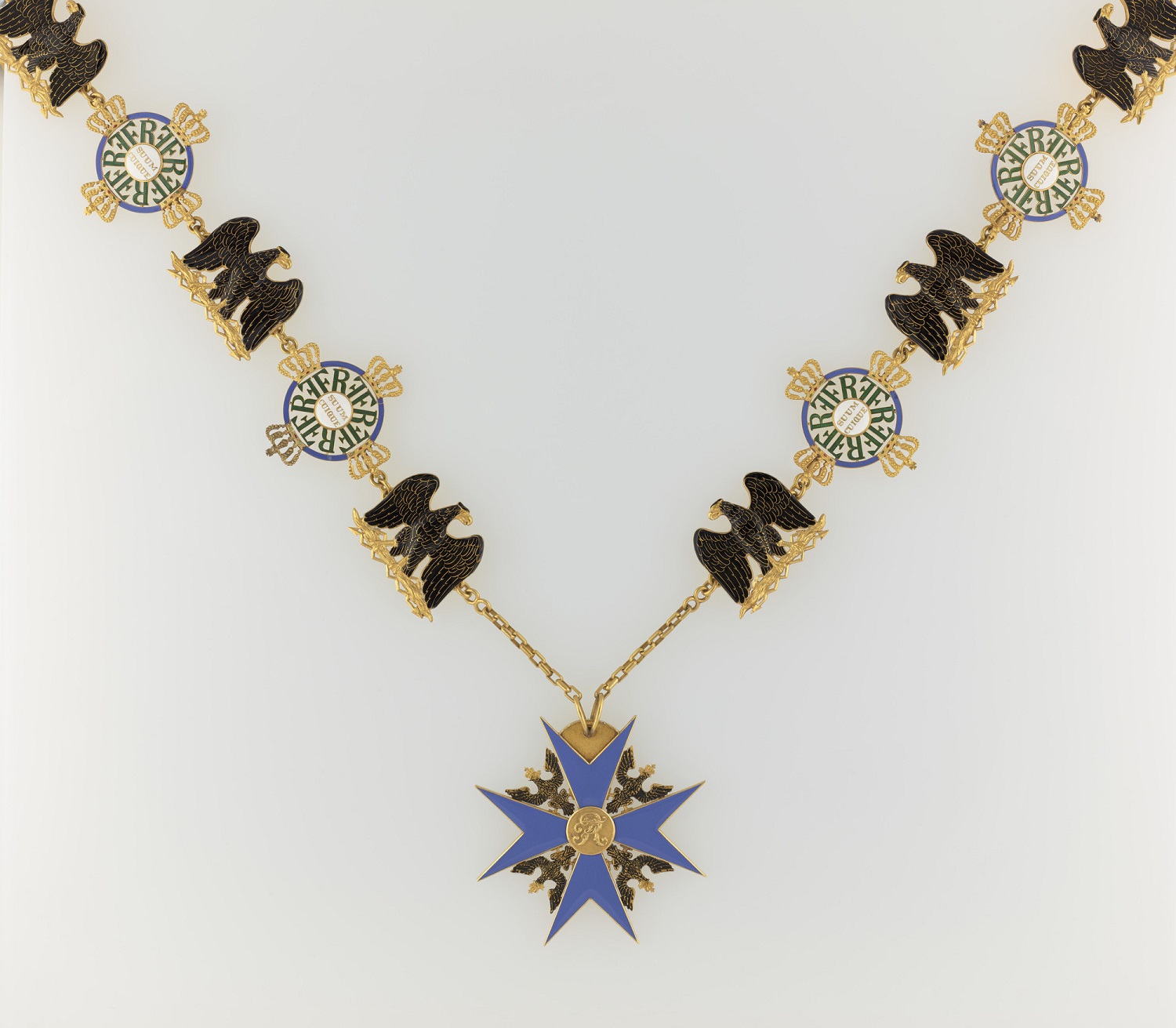
Arrival in England
The royal progress was noticed in The Gazette, which explained that the Elector and his son George Augustus left Hanover and crossed the Channel on the yacht Peregrine with an escort of men of war, landing at Greenwich on 18 September 1714.
The Gazette then recorded the first British honour to be conferred by the House of Hanover: “Before His Majesty quitted his ship, he was pleased ... to confer the honour of knighthood upon William Saunderson, Esq; the captain of the Peregrine yacht” (Gazette issue 5261).
The Elector inherited a British honours system that was limited in its extent, as it consisted of the dignities of peer, baronet and knight bachelor, and the orders of the Garter and the Thistle, which had a combined roll of fewer than 40 members.
The Elector brought no Hanoverian honours to London, having not copied any of his continental neighbours in creating awards of their own. A few of the European orders that had emerged during the Elector’s lifetime were known to readers of The Gazette, which had reported the institution of the Prussian Order of the Black Eagle in 1701 (Gazette issue 3675), and the Polish Order of the White Eagle in 1705 (Gazette issue 4182).
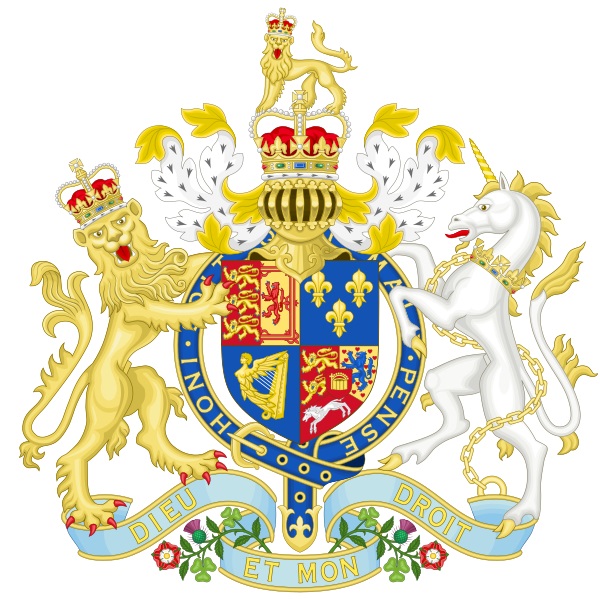
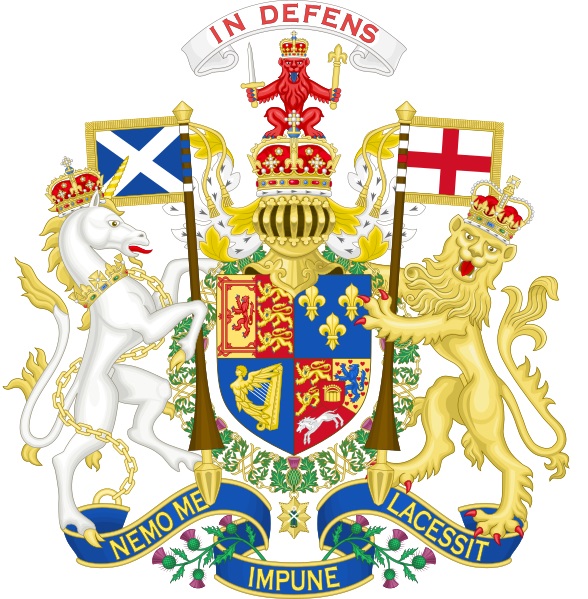
New arms
The arrival of the Elector caused changes to be made to the royal display and so his portrait and cypher were brought into the great seal and coinage, and the royal arms were revised to reflect his German legacy, and with one version of the arms for use in England and Ireland, and a different arrangement of the heraldic elements for Scotland.
One of the shield’s principal quarters now showed the heraldry of the electorate of Hanover, while the King’s titles of duke of Brunswick and Luneburg, and high treasurer and elector of the Holy Roman Empire were incorporated in the seals and coins.
The revised arms may have appeared in official settings from 1714, but the Hanoverian dimension did not impact on the appearance of The London Gazette at this point in its history, as the royal arms were not added to the title page of the official public record until 1785 (Gazette issue 12608).
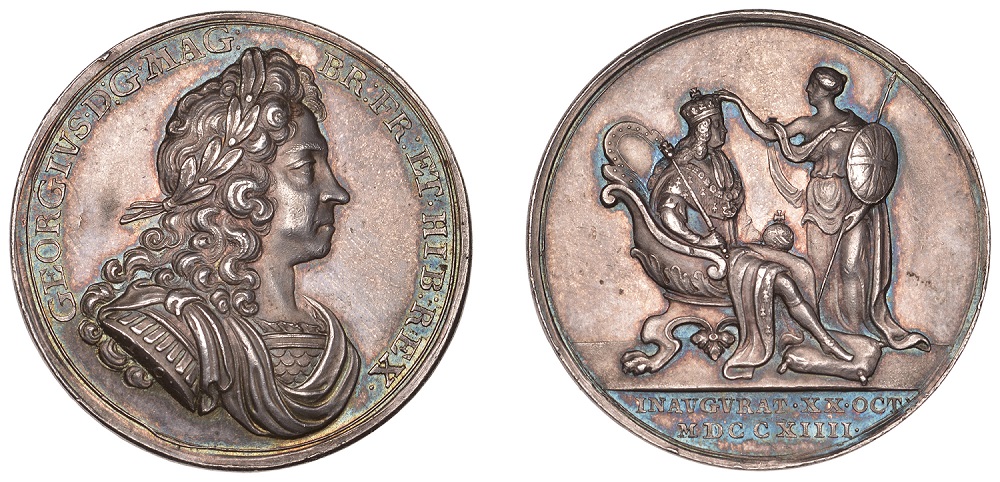
Coronation
King George I complied with the normal accession process and was crowned on 20 October 1714, when he followed the Stewart precedent of having the treasurer of the household distribute his coronation medal during the act of homage (Gazette issue 5270).
The first Hanoverian coronation medal was more restrained in its design than those that were thrown about during the most recent Stewart ceremonies, as William and Mary’s medal had shown Phaeton falling from his chariot after being struck by Jupiter’s thunderbolt, while Anne’s medal depicted Pallas confronting a double headed monster. The first Georgian medal showed a much calmer scene, as the King was portrayed being crowned by Britannia.
As usual, the King granted dignities even before he was presented with the golden spurs at his coronation, as demonstrated by the knighthood he conferred on Captain Saunderson when he landed in England. The Gazette also continued to indicate that honours were being distributed by the sovereign, even although the allocation of royal favours was largely a matter for the King’s ministers, who had a greater knowledge of, and more interest in, the levers of patronage.
The King retained an active role in the honours system, and The Gazette reported the occasions when he presented insignia, as happened as early as October 1714 when he gave the Garter to four peers (Gazette issue 5269).
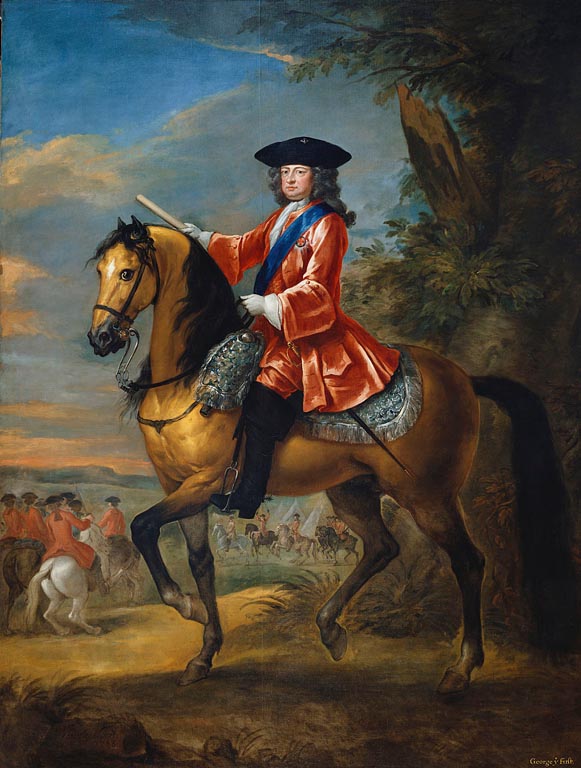
Guardian of the Realm
One notable feature of the reign was the King’s frequent absence from England to allow him to manage his family interests in Hanover, just as King William had done to maintain his links with his court and estates in Holland. King George addressed this situation by delegating the royal authority to his son, the Prince of Wales, but that proved to be unsatisfactory, and so he later adopted the practice of nominating justices to administer the government while he was away.
The King left for Hanover for the first time in the summer of 1716, not long after the Jacobite rebellion had been suppressed, and while the Old Pretender was still active on the Continent. The fate of some of the most prominent supporters of the Stewart cause provided the backdrop to George’s first home visit, as readers of The Gazette learned that Lords Derwentwater and Kenmure had been found guilty of high treason and were beheaded at Tower Hill in February 1716 (Gazette issue 5410).
Before the King crossed the Channel there was also some activity in the world of honours, as the Duke of Ormonde was expelled from the Garter for his part in the Jacobite rising, while the King’s companion Melusine von der Schulenburg was created a duchess after coming to England with their daughters.
The parliamentary session closed in June 1716 and the King gave his assent to several acts, including one “for the more effectual securing the peace of the Highlands in Scotland” and another that ensured that “no person who should come into possession of the Crown, shall go out of the dominions of England, Scotland, or Ireland, without consent of Parliament”.
The King also said, “I design to make use of the approaching recess to visit my dominions in Germany, and to provide for the peace and security of the kingdom, during my absence, by constituting my beloved son, the Prince of Wales, guardian of the Realm, and my lieutenant within the same” (Gazette issue 5446). Letters patent were duly issued under the great seal to appoint the prince, who attended the meeting of the Privy Council in July at which his commission was read.
This initial return visit to Hanover was unusual in that the King conducted a Garter investiture while he was in Germany, although details about the ceremony were not reported in The Gazette. The trip was unfortunately marred by news of the loss of a grandson, as the Princess of Wales gave birth to a “dead prince” in November 1716.
The Gazette provided no details about the Prince of Wales’s activities as guardian in connection with the grant of honours, and there were few references to his role in any other area of state business, apart from a proclamation from Hampton Court in October 1716, which prohibited British subjects from trading to the East Indies contrary to privileges granted to the United Company of Merchants of England Trading to the East Indies (better known as the East India Company) (Gazette issue 5480).
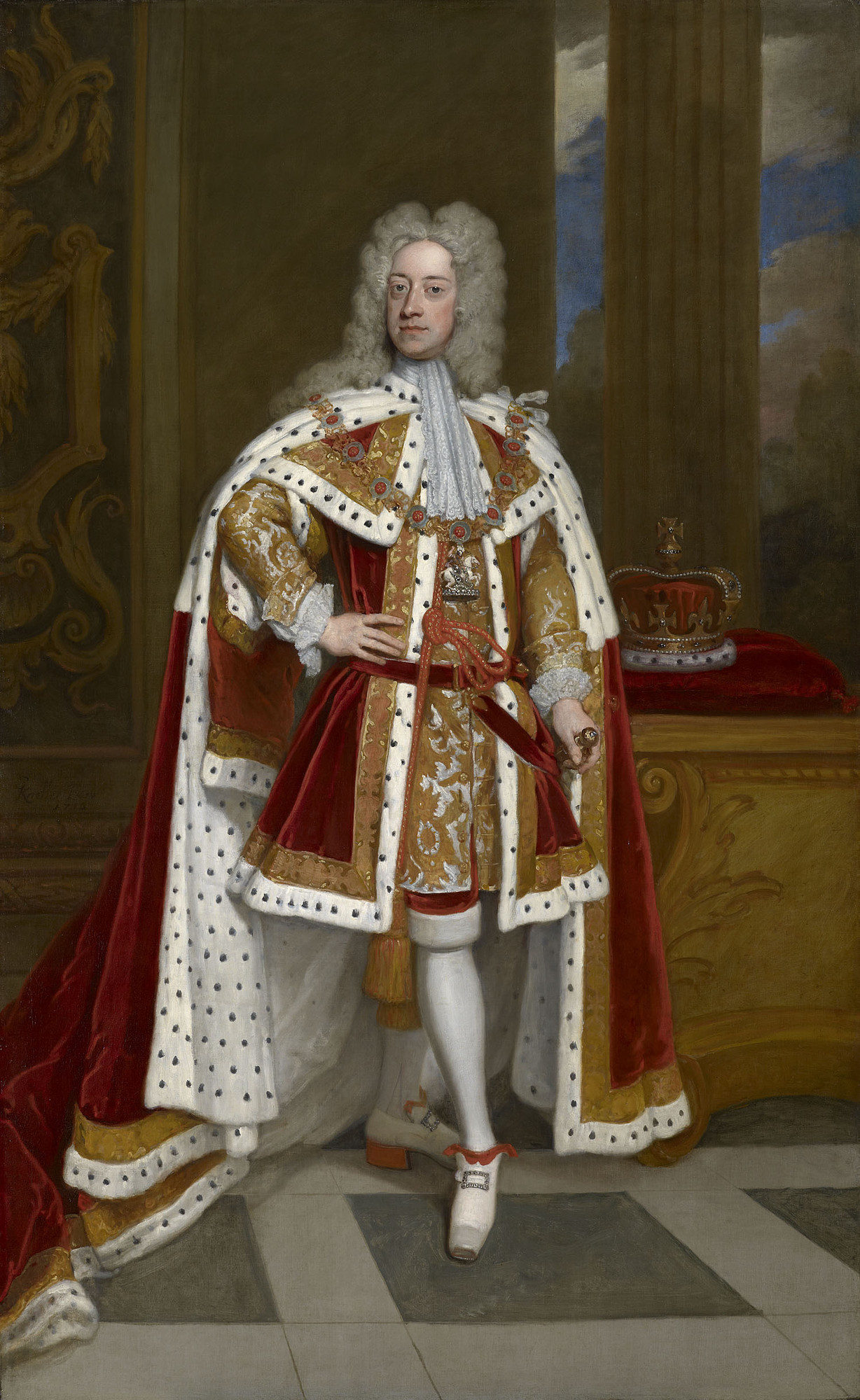
Lords Justices
The Prince of Wales had a strained relationship with his father, and this led to the old system of justices being revived to deal with the King’s next departure.
At the end of the parliamentary session in April 1719 the King said he was going abroad this summer and would “take the same care of your interest as if I remained here.” The Gazette then reported what happened at the Privy Council in May when the King “declared his intention to go out of the Kingdom for a short time, and was pleased to name the lords justices in whose hands His Majesty has thought fit to entrust the government during his absence” (Gazette issue 5744).
The justices included the archbishop of Canterbury, the lord chancellor and the Duke of Marlborough and, as before, there was no indication of the extent to which they could exercise the royal authority, but in practice no action was taken by Marlborough and his colleagues to grant peerages or other dignities, or make any appointments to the orders of knighthood.
The only major business relating to the orders that arose during the King’s second trip to Hanover came in June 1719 when the Duke of Kingston was installed as a knight of the Garter in St George’s Chapel by three commissioners who were nominated for that purpose (Gazette issue 5758).
Order of the Bath
The decision to appoint justices rather than rely on the Prince of Wales was repeated for the King’s visits in 1720 and 1723, and a similar step was taken two years later, shortly before The Gazette announced an important addition to the honours system.
On 27 May 1725, the eve of the King’s 65th birthday, letters patent were issued creating the Order of the Bath and The Gazette explained that the sovereign had presented the order’s red riband to the first knights, including Robert Walpole who had served as one of the justices in 1723 (Gazette issue 6376). Plans were made for Walpole and the other knights to be installed in Westminster Abbey in June, but the King embarked for Hanover rather than take part in the ritual. This apparent indifference to the order did no more than reflect the prevailing practice in the Garter, where the ceremony was usually delegated to commissioners, as in the case of the installation of the Duke of Kingston in 1719.
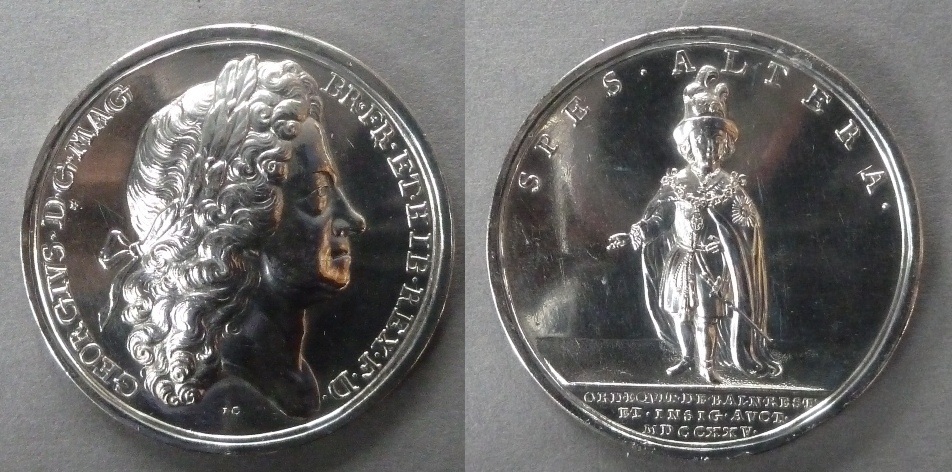 The Bath’s founding patent was the first document to pass under the great seal that
specifically attached the role of the sovereign of an order to the person holding
the Crown. This explicit link ensured that the successor to the Crown under the Act
of Settlement would automatically become the sovereign of the Order of the Bath, without
any further measures being necessary.
The Bath’s founding patent was the first document to pass under the great seal that
specifically attached the role of the sovereign of an order to the person holding
the Crown. This explicit link ensured that the successor to the Crown under the Act
of Settlement would automatically become the sovereign of the Order of the Bath, without
any further measures being necessary.
The patent provided that “we, our heirs and successors, kings of this realm, for ever shall be sovereign” and the order’s original statutes “declared, ordained, and enjoined, that we, our heirs and successors, kings of this realm, are, and for ever shall be, sovereigns of this Most Honourable Order of the Bath; to whom doth, and shall appertain, the resolution, reformation, interpretation, and determination, of every doubt, obscurity, or ambiguity, contained […] in any particular article of these our present statutes.”
A similar approach to formally linking the sovereignty of an order to the holder of the Crown was used in future patents, through to the 20th century and the founding document for the Order of the British Empire, whose statutes recall the spirit of 1725 and declare that “We, our heirs and successors, kings or queens regnant of our said realm, are and for ever shall be sovereigns of this order, to whom doth and shall belong all power of annulling, interpreting, explaining, or augmenting these and every part of these statutes”.
Osnabrück
The King left his officials to manage the affairs of the Bath and did not return to England until January 1726. His next departure was arranged for the summer of 1727, when the now familiar option of delegating the royal authority was selected, and Walpole resumed his duties as one of the justices. The King embarked on the yacht Carolina on 3 June but never returned, as The Gazette reported:
“Yesterday in the afternoon arrived a messenger, with an account, that our late most gracious sovereign King George was seized with a sudden illness, on the 9th instant, as he was in his coach … on his way to Hanover; His Majesty was presently let blood, and had such remedies as were judged proper administered to him; and travelled on to His Highness the Duke of York’s at Osnabrug [...] But notwithstanding all the physicians could do for his recovery, he departed this life the 11th, about one in the morning” (Gazette issue 6590).
About the author
Russell Malloch is a member of the Orders and Medals Research Society and an authority on British honours.
Let us know what you think of this article by getting in touch. All feedback is welcome.
See also
Gazette Firsts: The history of The Gazette and royal coronations
Find out more
Succession to the Crown Act 1707 (Legislation)
Images (in order of appearance)
The Gazette
Royal Collection Trust / © Her Majesty Queen Elizabeth II 2022
Getty Images
Royal Collection Trust / © Her Majesty Queen Elizabeth II 2022
Coat of Arms of Great Britain (1714-1801)
Noonans of Mayfair
Royal Collection Trust / © Her Majesty Queen Elizabeth II 2022
Royal Collection Trust / © Her Majesty Queen Elizabeth II 2022
Royal Collection Trust / © Her Majesty Queen Elizabeth II 2022
Publication date: 1 September 2022
Any opinion expressed in this article is that of the author and the author alone, and does not necessarily represent that of The Gazette.
